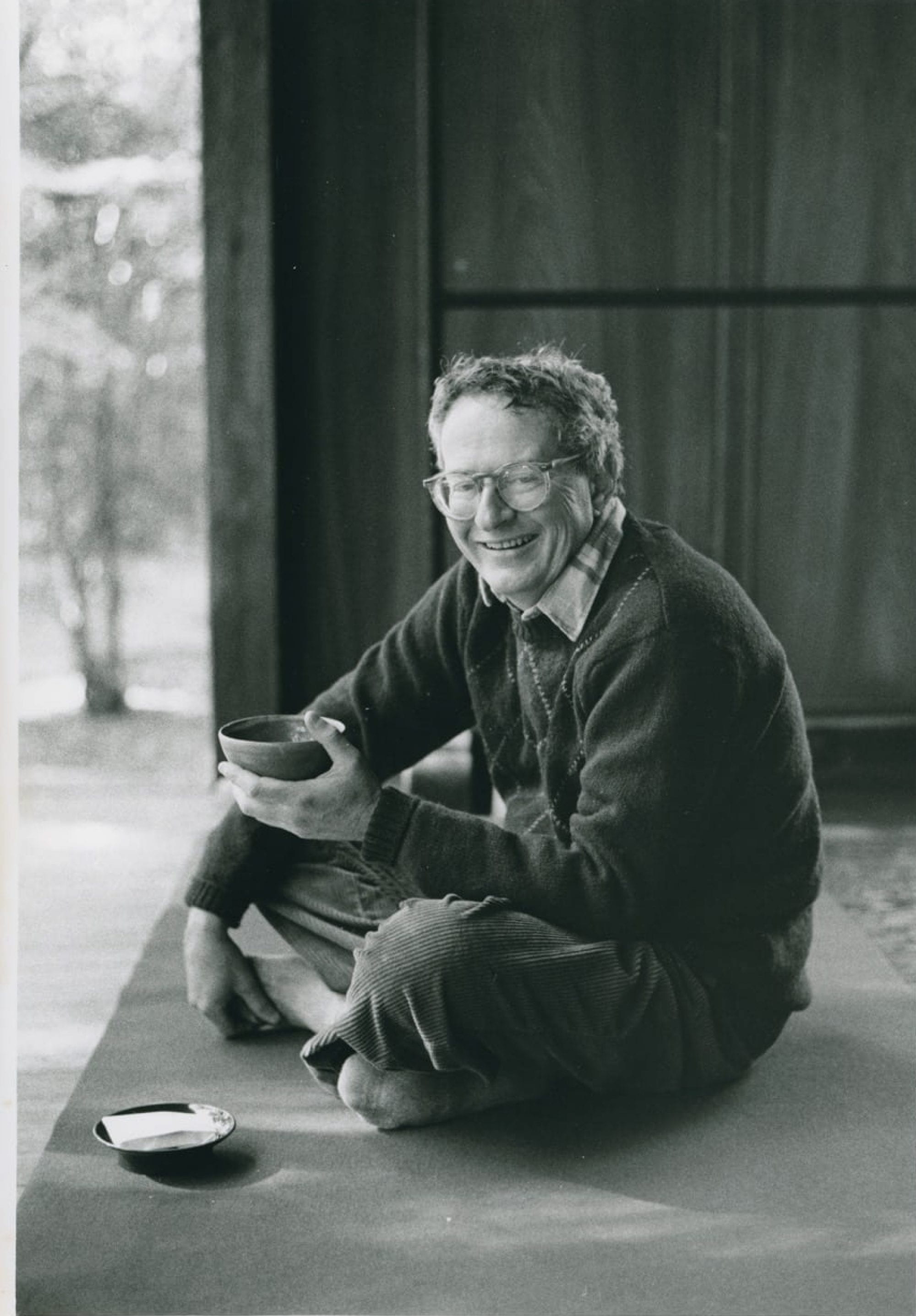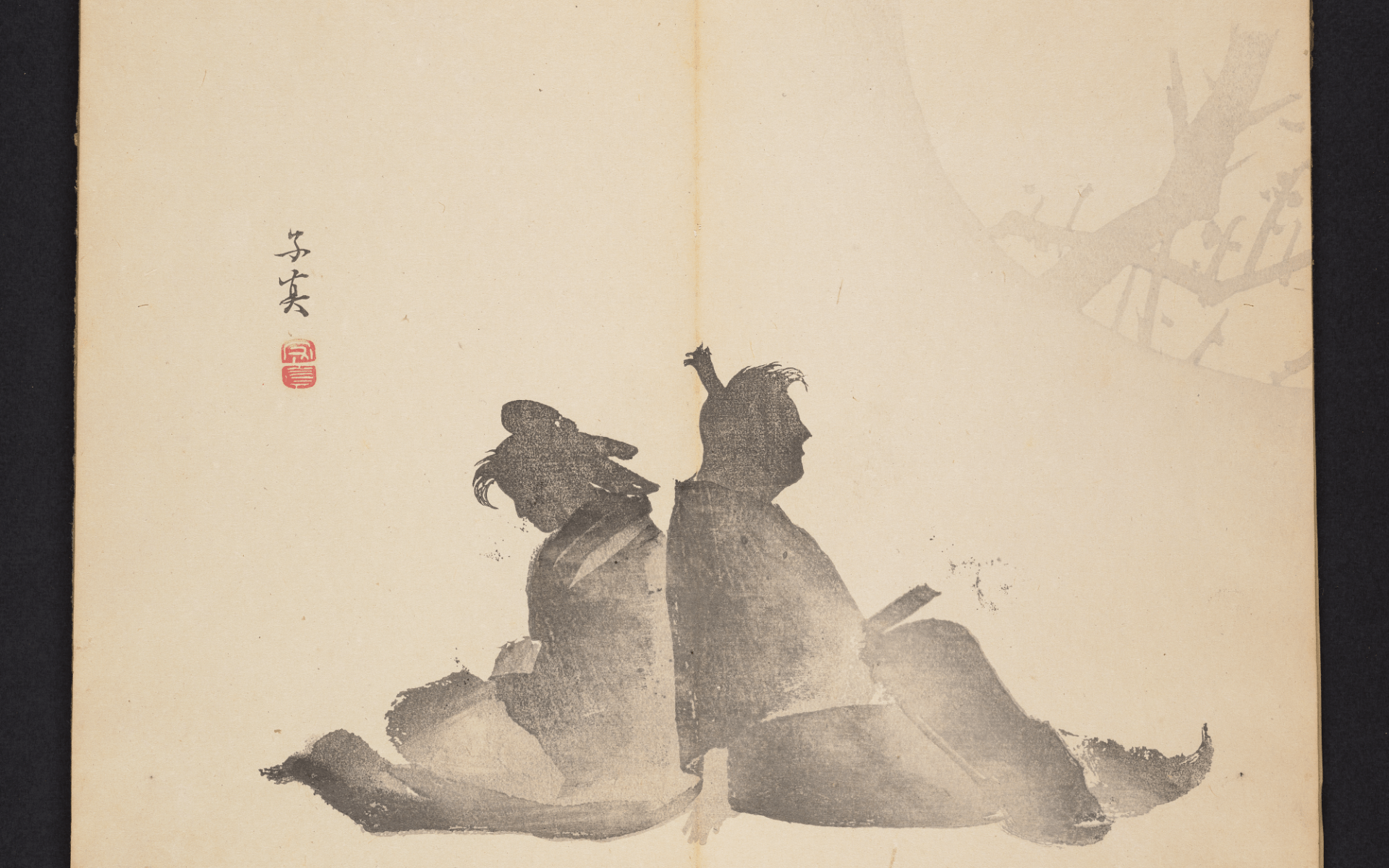Artist: Mori Tetsuzan 森徹山 (Japanese, 1775-1841) et al.
Author: Kagetsukanō Kirei
Date: 1836
Medium: Woodblock print, 27.7 cm x 15.8 cm
Publisher: Unknown
Gift of Arthur Tress, Box 17, Item 9
Kagetsujō, which literally translates to “Album of Flowers and Moon,” would be more correctly understood as “Kagetsu’s Album,” since Kagetsu (besides meaning flowers and moon) is also the name of the editor who compiled the volume. Kagetsujō comprises approximately fifteen illustrations created with sumi ink of various gradations, rendered into woodblock, which are composed by a number of artists and interspersed with occasional pages of text. Those illustrations, broadly speaking, fit under the genre of the shunga (“spring pictures”), or erotic art. According to the British Museum, Kireiken Toen, who went by the pen-name of Kagetsukano, was acquainted with many Japanese artists of the time and compiled the volume as a gift for a trip to Edo.
In certain early editions of Kagetsujō, a list of artist names appears at the end of the volume, revealing the true identities of those who signed their seals with pseudonyms. That list is not included in our edition. Many of the contributing artists follow the Shijō school, while other leaders of Kyoto schools are also represented. They include Kano Eigaku (Kanō school), Maruyama Ōshin (Maruyama/Shijō school), Mori Tetsuzan (Maruyama/Shijō school), and many more. Interestingly, this eclectic group converges in this volume in style, depicting erotic scenes in a slightly abstract, highly evocative style, a departure from the more detailed and colorful shunga illustrations by artists such as Hokusai. Printed with black sumi ink that fades in and out of focus, as well as an astute use of negative space to create form in the absence of color, the illustrations are rather emotionally charged. In fact, some of the illustrations are not explicitly or implicitly sexual, such as the image above.
It is understood that many of the artworks are based on previous shunga and scrolls. As scholar Jack Hillier points out, the print above, for instance, is reminiscent of seventeenth-century artwork by Moroshige. There are many other editions of this work around the world, such as in the British Museum, in the collection of Nakano Mitsutoshi, and in the Ebi Collection, Leeds (with a list of artists at the end of the volume).
Selected Readings
Jack Hillier, The Art of the Japanese Book (London: Philip Wilson Publishers Ltd., 1987).
Nakano Mitsutoshi, “Kirei wakudeki,” in Edo kyōsha den (Tokyo, 2007), 439–493, 478–484.
Richard Lane, “Kagetsu-jō — A Shijō shunga album,” Ukiyo-e 65 (Spring 1976), 88–125.
Posted by Kelly Liu, Fall semester, 2019


